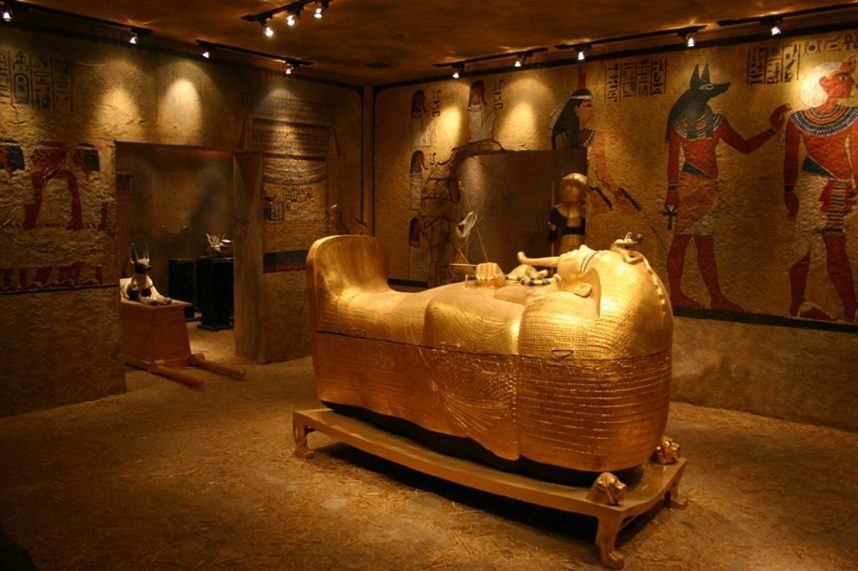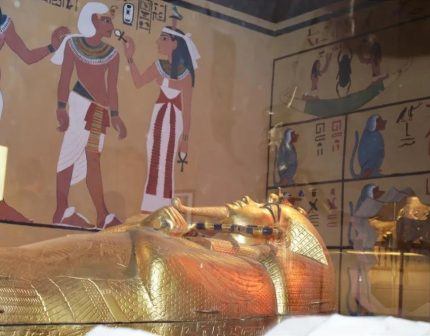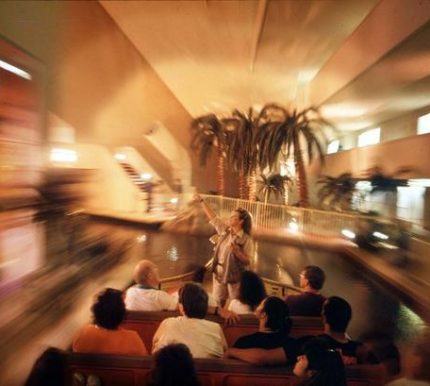LOST VEGAS: Luxor’s Forgotten King Tut Tomb
Posted on: July 7, 2025, 12:14h.
Last updated on: July 8, 2025, 10:37h.
- “Discovering King Tut’s Tomb” isn’t the first exhibit of Tut reproductions displayed by the Luxor
- King Tut’s Tomb and Museum, a different simulation of the relics discovered in Egypt’s Valley of the Kings, debuted along with the Las Vegas casino resort in 1993
- Though intended to be permanent, that exhibit was removed in June 2008 and now resides at the Las Vegas Natural History Museum
King Tut’s Tomb is a copycat situation.

Yes, the current exhibit, which opened at the Luxor in 2022, obviously only simulates the relics discovered during Howard Carter’s 1922 expedition into Egypt’s Valley of the Kings.
The real ones are in Cairo, where all 5,000 are set to go on permanent display at the Grant Egyptian Museum. (They toured the US only twice, from 1961-63 and 1976-79.)

But “Discovering King Tut’s Tomb” was not the first Tut simulation to occupy the Las Vegas Strip’s simulated pyramid.
When the Luxor opened in 1993, it was with King Tut’s Tomb and Museum as a permanent feature.
Visitors walked through chambers simulating the antechamber, burial chamber, and treasury. Inside its hieroglyphic-covered walls were over 500 simulated artifacts, such as King Tutankhamun’s golden sarcophagus, death mask, jewelry, and chariot.
The attraction took more than six months and 50 Egyptian artists to craft — with oversight from Egyptologist Zahi Hawass — at a cost of $3 million. At the time, it was promoted as one of two sets of Tutankhamun tomb replicas authorized by the Egyptian Ministry of Antiquities (the other was never mentioned).
Located on the same atrium level as the current King Tut exhibit (where the Titanic exhibit is today), King Tut’s Tomb and Museum was one of the main attractions of the 30-story resort opened by Circus Circus Enterprises.
Ankh You, Next!

The de-theming of Las Vegas — a decadelong process that began in 2000 — saw the MGM Grand lose its amusement park and “Wizard of Oz” animatronics, the Excalibur lose its dragon, and Treasure Island’s pirate battle transformed into a nonsensical sexy pirate battle.
The process — undertaken to shift Las Vegas back from its family-friendly sales pitch of the ’90s to its traditional adults-only vibe — also cost the Luxor both its Nile River ride and its first King Tut exhibit.
The entire, four-room shebang was donated to the Las Vegas Natural History Museum in 2008. This small nonprofit located on Las Vegas Boulevard two miles north of the Strip, raised approximately $750K to build a 4,000-square-foot wing to house the collection. It remains there today as the Treasures of Egypt exhibit.
And you can see it for only $12 per adult, a third of what the Luxor’s newer simulation will cost you.
“Lost Vegas” is an occasional Casino.org series spotlighting Las Vegas’ forgotten history. Click here to read other entries in the series. Think you know a good Vegas story lost to history? Email corey@casino.org.
No comments yet